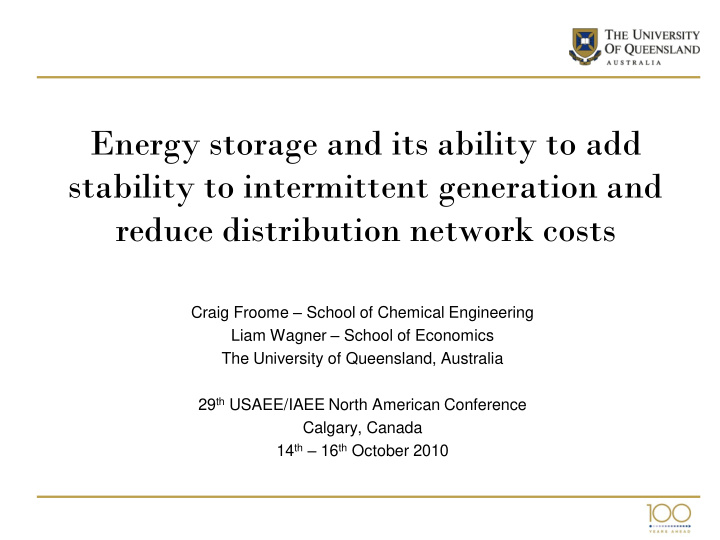



Energy storage and its ability to add stability to intermittent generation and reduce distribution network costs Craig Froome – School of Chemical Engineering Liam Wagner – School of Economics The University of Queensland, Australia 29 th USAEE/IAEE North American Conference Calgary, Canada 14 th – 16 th October 2010
Introduction • Overview of Australian Transmission and Distribution Network • Research Objectives • Research Outcomes • Overview of UQ Solar Array and Storage Research
Introduction – Network and Resources
Research Objectives We will have a 1.2 MW PV Array (Dec 2010) We will have 400 kWh Battery Storage (May 2011) How can we use these systems to verify current analysis on the national market What are we trying to achieve?
Load Shifting – The Basics The major objective is to reduce our peak demand. This can be achieved through PV alone .... but Source: Perez (2003)
UQ (EEMG) Market Model
Battery Penetration Rates – Qld & SA
Load Duration Curves – Qld & SA
Price Distribution – Qld & SA
The UQ 1.2 MW Array This array whilst reducing our peak demand will also be utilised for research and teaching purposes. We currently will be looking at: - • Battery Storage (400 kWh) • Inverter Trials x 2 • New Generation Panels (100 kW)
UQ 1.2 MW PV Array
Research Data Collection
Conclusions Deployment of renewable technologies within the distribution network is inevitable. Storage will help overcome the current barriers relating to intermittency. Being able to model these through a micro-grid will allow for assessment of the impact of storage. The cost savings through reduced distribution charges will further accelerate the deployment of renewable energy.
Thank You and Questions Craig Froome School of Chemical Engineering The University of Queensland c.froome@uq.edu.au
Recommend
More recommend